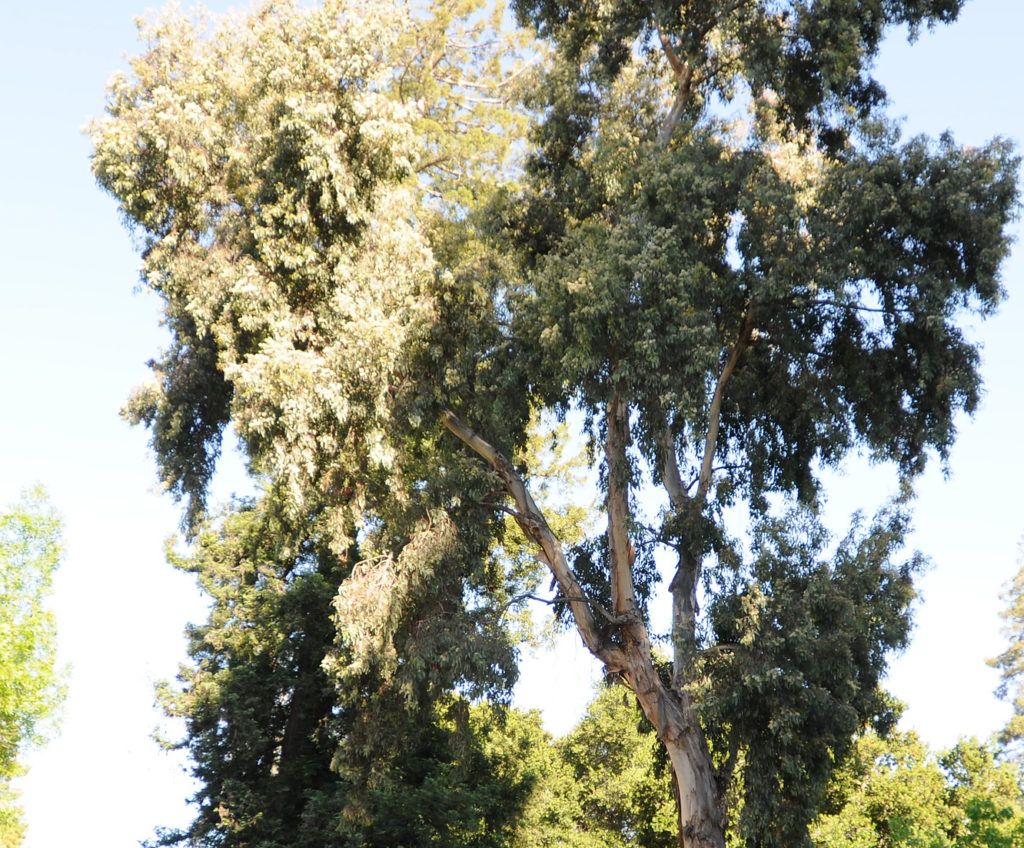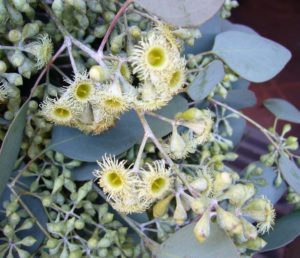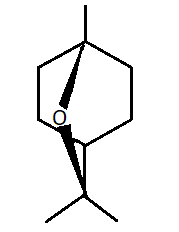- About Us
- Our Work
- Tree Info
- Get Involved
- Blog
- Support Us
By Canopy Team on August 13, 2018

Tree Spotlight Series: Follow along as we learn about the fascinating trees that live among us. This series is in partnership with Rhee Lab in the Plant Biology Department of the Carnegie Institution for Science.
Check out other posts in this series featuring the Ginkgo biloba, Douglas fir, Giant sequoia, and Chinese tallow.

The silver-dollar gum (Eucalyptus polyanthemos) is an evergreen ornamental tree native to Australia. It is drought resistant and fast-growing. It is commonly planted as an ornamental, but it also has many commercial uses. Due to its rapid production of wood, this tree and many other Eucalyptus species were introduced to California. However, outside of its native habitat, Eucalyptus trees have grown abundantly and are now considered an invasive species.
The silver-dollar gum is so-called after the appearance of its leaves, which are round and silvery-white underneath. Many eucalyptus trees are called gums, named for the gummy resin produced beneath the bark of the trees. The tree used to be known as the red box in reference to the red wood of the tree. The bark is boxy, rough, and short-fibered. Like many other eucalyptus trees, the silver-dollar gum frequently sheds its bark in strips. This helps the tree shed mosses, lichens, or climbing plants that grow on top of it.

The genus name Eucalyptus comes from a Greek term meaning “well-covered”, in reference to the cup-shaped bud that covers the flowers before they bloom. The epithet polyanthemos means “many flowers”. The flowers are loved by bees, and the nectar from Eucalyptus flowers is sold as a delicious monofloral honey.
Along with other Eucalyptus trees, the silver-dollar gum was an important tree for the Australian Aborigines. Its wood was used to make fences, tools, and canoes. Some trees have scars where bark has been removed by Aboriginal people, including a notable silver-dollar gum in the Australian Capital Territory. These trees mark areas of cultural and historical significance, as they show Aboriginal presence in the area and provide clues to the cultural use of the land.

The leaves of the silver-dollar gum and other Eucalyptus trees smell medicinal or lemony—this is the due to a number of volatile compounds that the tree produces. The main compound is eucalyptol, a monoterpenoid. Eucalyptol is distilled from the leaves to produce eucalyptus oil, which is used as a medicinal ingredient, fragrance, and flavor. Medicinally, it is used in cold medication as a decongestant and cough suppressant. It also has some antimicrobial properties, which is why it is used in toothpastes and mouthwashes.
In the 1800s, when malaria was thought to be caused by bad air, Eucalyptus trees were believed to deter malaria by refreshing the air with their medicinal smell. A group of monks in the Tre Fontaine monastery in Rome, Italy, were plagued by malaria every summer. After planting Eucalyptus trees all around the monastery, the number of cases was reduced to zero. While no one knew why the trees had such a profound effect for many years, recent research finally unveiled that the volatile compounds produced by the leaves are an effective insect deterrent. The citrus smell is repulsive to mosquitoes and would drive them away, taking the disease with them.
While the tree has many uses—strong wood, medicine, honey—it can also be hazardous. The silver-dollar gum thrives in hot, dry climates, and eucalyptol vapor is extremely flammable. Additionally, the tree sheds its bark, covering the ground in effective kindling. Due to the oil and resin content in the tree, some eucalyptus trees are known to explode during fires. While many trees can grow again after fires, they can cause considerable environmental damage. Eucalyptus forests are responsible for some of the most catastrophic fires in Australia.
The silver-dollar gum is not a main producer of eucalyptus oil or honey, but it is still a beautiful and useful tree. Their sturdy wood makes for good fence posts and firewood. If their growth is controlled, they can be a wonderful addition to parks and cities.

Galyna Vakulenko is a 2018 summer intern at the Rhee Lab in the Plant Biology Department of the Carnegie Institution for Science at Stanford University. She is an undergraduate student majoring in plant physiology at Carleton University in Ottawa, Canada.